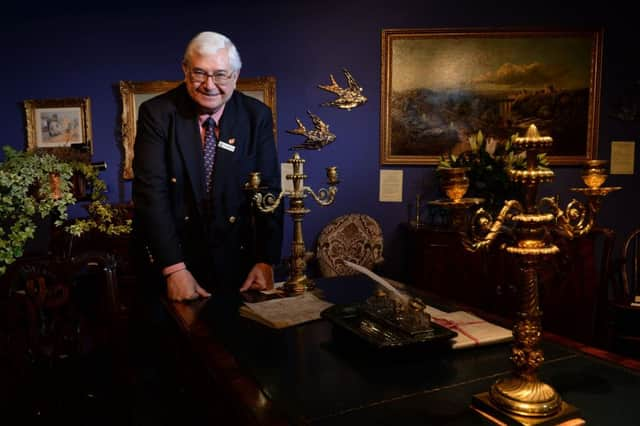How antiques became the new Ikea


But the days of chucking out the chintz, as Ikea put it in a famous commercial, have given way to the economic realities of 21st century life, and the old furniture their elders discarded is suddenly back in fashion.
As one of the country’s biggest autumn antiques fairs got under way in Harrogate yesterday, the talk was of changing times that had gone full circle.
Advertisement
Hide AdAdvertisement
Hide AdA renaissance in such events, fuelled by low interest rates for savers and the effects of getting on to the housing ladder later in life, was said to have seen off the slump that has afflicted the industry for the last decade and a half.
Home owners were more discerning and not averse to investing in fine furniture and art to make their money work harder than in a bank account, experts said.
Antiques writer Duncan Phillips said the industry was servicing a new generation of buyer for whom Scandinavian MDF was more kitsch than traditional “Georgian brown”.
He said: “There’s no longer the interest in minimalism. That’s all gone now and people are looking to decorate their houses in a far more period style.
Advertisement
Hide AdAdvertisement
Hide Ad“It’s changed quite dramatically. We’re finding a greater appreciation for value and people are looking at older pieces again.”
He said homemakers had also realised that antique furniture was more likely to be a hedge against depreciation.
“Everything was cheap, cheerful and throwaway, but that’s changed and people are now looking for lasting value.
“I’ve bought tables and chairs and then moved house and sold them, got my money back, and bought different tables and chairs,” Mr Phillips said.
Advertisement
Hide AdAdvertisement
Hide Ad“You may not double your money but you’ve got the pieces around you to live with, and a solid investment which you can get a return on and use to buy something else.
“A table from Habitat or IKEA isn’t going to be worth half what you paid for it within a week.”
He said the market had rebounded from the downturn that had kicked in after the terrorist attacks of 2001.
“The antiques trade in the UK relied on overseas buyers coming across, buying furniture and taking it back. After 9-11, that slowed down and the internet took up the slack,” Mr Phillips said.
Advertisement
Hide AdAdvertisement
Hide Ad“Antique furniture dropped in price quite dramatically. Pieces that were £30,000 were down to £10,000 and that dampened the market significantly. But now that’s bottomed out.
“I’m sure that back in the 1990s prices were over inflated but now antiques are more affordable and the market’s picking up.”
David Harvey, a dealer at the Harrogate fair, which continues through the weekend at the Great Yorkshire Showground, said first-time buyers were older than before and more likely to make discerning choices.
He said: “People buy antiques to put in their homes, not in rented properties.”
Advertisement
Hide AdAdvertisement
Hide Ad“But the way we go about buying a home has changed . Fewer people are able to buy in their twenties, so they do it later in life.
“As more houses are being built those people are coming back into the market. Once they have got on the housing ladder and recovered from the first couple of years, they are looking for pieces that they can keep in their homes – and with low interest rates they are putting their savings into buying nice things that they want to live with.
“Apart from anything else, the realignment of prices means that antiques have never been as affordable as they are now.”